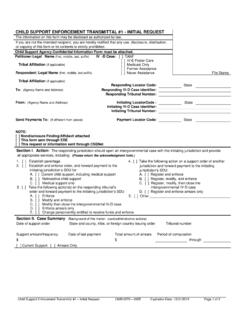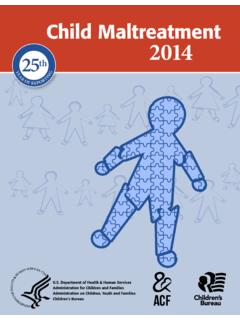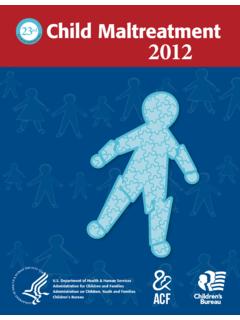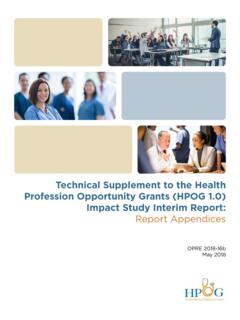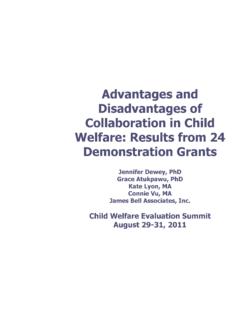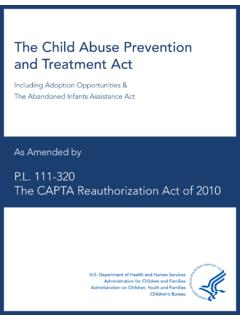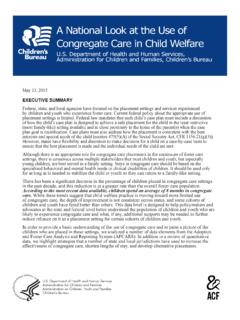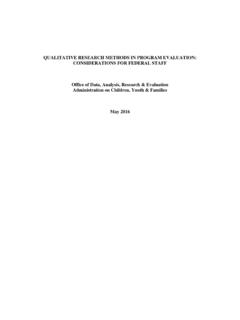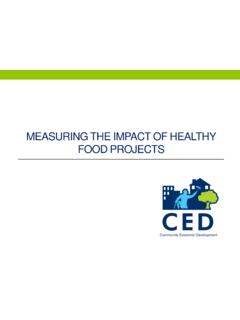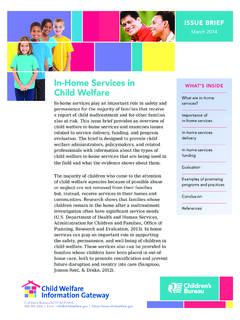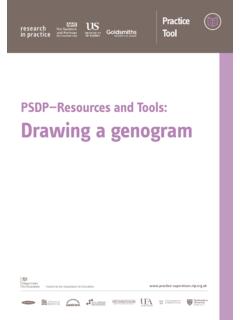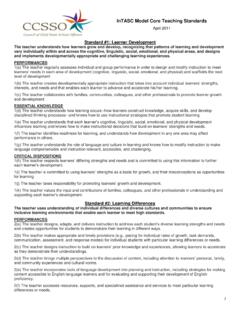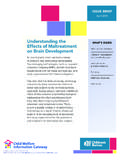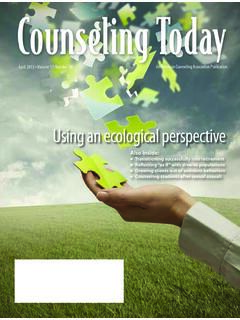Transcription of Human Trafficking Prevention
1 HumanTraffickingPreventionStrategies for Runaway and Homeless Youth Settings ISSUE BRIEFNOVEMBER 2020 1 Executive Summary This Issue Brief explores strategies to integrate Human Trafficking ( HT) Prevention into Runaway and H omeless Youth (RHY) programs. These strategies emphasize the vital role that RHY programs can play in the Prevention of sex and labor Trafficking among runaway and homeless youth. It also highlights the importance of integrating public health, trauma-informed, and positive youth development principles in the development and implementation of HT Prevention interventions. Key highlights of this Issue Brief include: Integrating sex and labor Trafficking Prevention strategies based on the uniqueexperiences, needs, and strengths of RHY. Building local capacity in HT Prevention efforts by educating community stakeholders onthe intersection of HT, runaway incidents, and youth homelessness. Using existing programmatic frameworks to incorporate HT Prevention components intoRHY settings.
2 Addressing the root causes and social conditions in which RHY become vulnerable toexploitation, violence, and Brief: Human Trafficking Prevention Strategies for Runaway and Homeless Youth Settings 2 Introduction I. Human Trafficking Among Runaway and Homeless Youth Human Trafficking victimization can happen to anyone persons of any race, age, gender, socioeconomic background, sexual orientation, ethnicity, religion, or nationality. However, some people are more vulnerable to Trafficking than others. While data are lacking on the prevalence of Trafficking in the population in general, research suggests that runaway and homeless youth (RHY) populations are at a particularly high risk of becoming Trafficking In two separate studies, nearly all trafficked youth surveyed had experienced homelessness or significant housing instability, and their exploitation occurred while they were One recent study found that as many as 20% of sheltered homeless youth had experienced Trafficking victimization in their RHY are particularly vulnerable to Trafficking because they often lack stable incomes, secure housing, and the strong support networks that would help them be resilient to the manipulation of traffickers.
3 Even within the RHY community, some youth experience particularly heightened risk. For instance, youth who have been involved with the child welfare system are at high risk of Additionally, several studies have shown that a disproportionate number of homeless Trafficking victims are youth from vulnerable One report on suspected HT incidents between 2008 and 2010 indicated that people of color were significantly more likely to be Trafficking victims than Arrest reports suggest that more than half of all minor Trafficking victims are African Youth from vulnerable populations are also highly impacted by running away episodes. In 2005, Black and Latino youth were found to be more likely to run away than White According to the National Runaway Safeline (NRS), which is the federally funded National RHY Hotline, youth who reach out to their crisis services are disproportionately African American and Latino, when compared to the nation s general population. NRS also found an increase in the number of Native American youth reaching out regarding running away or experiencing homelessness.
4 Between april 2015 and March 2019, NRS received 883 crisis contacts (via hotline, chat, email, or online forum) from youth who identified as American Indian or Alaska Native. Youth who run away and live on the streets will likely become prey to multiple victimizations, including HT. Human Trafficking Definition The Trafficking Victims Protection Act (TVPA) of 2000, as amended, defines severe forms of Trafficking in persons in 22 7102 (11) as: Sex Trafficking : The recruitment, harboring, transportation, provision, obtaining, patronizing, or soliciting of a person for the purpose of a commercial sex act in which the commercial sex act is induced by force, fraud, or coercion, or in which the person induced to perform such act has not attained 18 years of age. Labor Trafficking : The recruitment, harboring, transportation, provision, or obtaining of a person for labor or services through the use of force, fraud, or coercion, for the purposes of subjection to involuntary servitude, peonage, debt bondage or slavery.
5 Issue Brief: Human Trafficking Prevention Strategies for Runaway and Homeless Youth Settings 3 Labor and sex Trafficking Prevention programs should be tailored to RHY populations and designed to be culturally relevant and culturally competent. Furthermore, HT Prevention interventions targeting RHY should be based on trauma-informed and positive youth development principles. II. Risks and Protective Factors Recent research among homeless youth identified 10 distinct, but intersecting, risk factors for HT within this population: sexual abuse, emotional abuse, physical abuse, history of arrest, f oster care involvement, disabling conditions, mental health issues, witnessing violence in the home, family legal problems, and s uicidality. Adverse Childhood Experiences (ACEs) have a significant impact on future violence victimization and perpetration, and lifelong health and The Adverse Childhood Experiences (ACEs) survey measures 10 types of childhood trauma. Five items are focused on abuse and neglect: physical abuse, verbal abuse, sexual abuse, physical neglect, and emotional neglect.
6 The five additional items are related to household challenges: a parent who is an alcoholic, a mother who is a victim of domestic violence, a family member in jail, a family member diagnosed with a mental illness, and the disappearance of a parent through divorce, death, or abandonment. Each type of childhood trauma counts as one score point; with scores ranging from 0 to 10. The higher the ACE score, the higher the risk for chronic disease, mental illness, and becoming a victim of Results of one ACE survey showed that trafficked homeless youth were far more likely to have a high number of ACEs. In fact, 94% of trafficked youth had ACE scores of six or higher, compared to 43% of youth who had not been trafficked. In addition, 61% of trafficked youth reported an extraordinary 9 out of 10 adverse childhood In another study, 66% of trafficked respondents had ACE scores of four or Other risk factors include having an individualized education program (IEP) or 504 A study of youth experiencing homelessness found that previous substance abuse, self-harm behaviors, and suicide attempts were prevalent among youth who were later Numerous studies confirm these behaviors as risk factors in addition to poverty, unstable living environments,15 and other socioeconomic factors.
7 Although few studies have been conducted on specific interventions to prevent HT among RHY, research has demonstrated the importance of social connections, emotional competence, and nurturing relationships as protective factors to prevent or reduce the likelihood of vulnerable youth being trafficked. The most significant factor in reducing the recruitment of RHY into Trafficking situations was having a supportive adult in their lives. Mentoring programs within RHY settings can provide the social, emotional, and nurturing relationships that can help youth build their self-confidence and connect them with community resources to increase support and opportunities for More importantly, these protective factors extend beyond the experiences and competencies of the affected youth to the familial and societal relationships that support them including parental knowledge of parenting skills, parental resilience, and concrete support for Issue Brief: Human Trafficking Prevention Strategies for Runaway and Homeless Youth Settings 4 This suggests a need for RHY programs to help build resilient communities of connectedness around youth to resist Trafficking and create opportunities for RHY to reach their full potential.
8 Creating connections with families, parents, or other caring adults can be a protective factor for youth receiving services in RHY programs. III. The Importance of Prevention Deliberate efforts to prevent HT are critical within RHY settings to reduce the likelihood of exploitation. Prevention means building individual skills and knowledge and creating an environment in which RHY are bolstered by protective factors. These efforts help youth learn to be resilient against exploitation and risk in their lives at home, school, work, and the community. Public health researchers have developed a three-tiered system of Prevention to inform our understanding of Prevention of HT among RHY. 1. Primary Prevention stops the violence before it occurs. Primary Prevention strategies include strengthening and creating healthy relationships, reducing risks within the individual s environment, and increasing protective factors. 2. Secondary Prevention provides an immediate response to violence as it occurs.
9 These services include first responses, such as basic services and emergency and medical care that address short-term consequences. 3. Tertiary Prevention activities are long-term responses that occur in the aftermath of violence, such as rehabilitative services ( , long-term housing, job training, therapeutic counseling, and other supportive services) that seek to prevent Comprehensive HT Prevention requires communities to attend to all three levels of Prevention described above. The recommendations provided in this Issue Brief focus on the efforts that RHY service providers can consider to address Trafficking before it actually occurs to youth in crisis, runaway youth, and youth experiencing homelessness. The recommendations also highlight Prevention education, awareness, risk reduction, resilience building, and community support systems development. These approaches may apply to individual youth, community stakeholders, and RHY service providers. In developing Prevention efforts, RHY providers and their partners are encouraged to consider the social and economic factors in their communities that may contribute to the Trafficking of RHY.
10 These factors, often referred to as the social determinants of health, are defined as the conditions ( , social, economic, and physical) in the environment in which people are born, live, learn, work, play, worship, and age that affect a wide range of health, functioning, and quality-of-life outcomes and risks. 19 It is essential to understand and identify the root causes and social conditions in which RHY become vulnerable to exploitation, violence, and HT. Understanding these factors can ensure that Prevention interventions are effective and sustainable. Communities should also proactively confront the economic factors and social conditions that make RHY vulnerable to Trafficking and RHY programs can address Issue Brief: Human Trafficking Prevention Strategies for Runaway and Homeless Youth Settings 5 these community protective factors as well as build resilience within individual youth. This means encouraging RHY programs to consider the following three approaches: 1.
